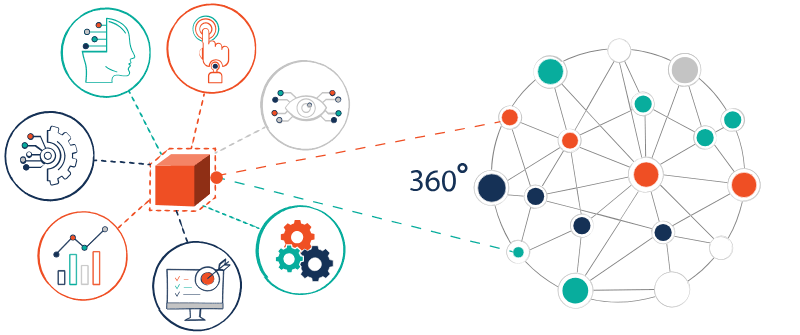What Is an Information Silo?
An information silo is an information management system that is limited to communicate with other information management systems freely & flexibly. Communication within an information silo is always vertical, making it almost impossible for the system to work with related/unrelated systems.
Imagine a large office building with many different departments. Each department has its own set of files and documents, but they don’t share these files with the other departments. This is like an information silo. The information is there, but it’s locked away and not accessible to everyone who needs it.

Information silos can occur in any organization. They can be caused by a number of factors, such as:
Different departments or teams using different software systems. This can make it difficult for people to share information with each other.
A lack of communication and collaboration between departments. If people don’t talk to each other or work together, they’re less likely to share information.
A culture of secrecy or competition. If people are afraid of sharing information with others, or if they feel like they’re competing with each other, they’re less likely to do so.
The state of information silos in 2023-
76% of respondents admit that data silos hinder cross-departmental exchange. (XPLM Industry Study 2023)
74% of respondents see data silos as a competitive disadvantage. (XPLM Industry Study 2023)
40% of companies have seen an increase in the number of data silos in recent years. (XPLM Industry Study 2023)
Only 10% of companies have been successful in improving access to information company-wide. (XPLM Industry Study 2023)
Companies lose an average of $15 million per year due to poor quality data. (Gartner)
Companies can lose up to 30% in revenue annually due to inefficiencies resulting from incorrect or siloed data. (IDC Market Research)
82% of executives say that their organization has a data silo problem. (IBM)
Only 22% of business leaders say their teams share data well. (Zendesk)
71% of companies say that corporate culture favors the emergence of data silos. (XPLM Industry Study 2023)
46% of companies say that data silos are a major barrier to digital transformation. (NewVantage Partners)
63% of companies say that data silos make it difficult to comply with regulations. (NewVantage Partners)

Information silos can have a number of negative consequences, such as:
Wasted time and resources. If people have to duplicate work because they don’t have access to the information they need, this wastes time and resources.
Poor decision-making. If people don’t have access to all the relevant information, they may make poor decisions.
Reduced innovation. If people can’t share ideas and collaborate with each other, it can stifle innovation.
How to address information silos?
Few general tips
Implement enterprise resource planning (ERP) systems. ERP systems integrate different software systems and databases, making it easier for people to share information.
Promote communication and collaboration between departments. This can be done through regular meetings, team-building exercises, and collaboration tools such as shared documents and wikis.
Create a culture of openness and transparency. This means encouraging people to share information with others, even if they are afraid of making mistakes.
Develop common data standards. This will make it easier for different systems to share data with each other.
Invest in data governance tools and processes. Data governance is the process of managing data effectively throughout its lifecycle, from creation to destruction. This includes ensuring that data is accurate, complete, and accessible to the people who need it.
Provide training on data sharing and collaboration. Employees need to understand the importance of sharing data and how to do it effectively.
Empower employees to make decisions about data sharing. Employees should feel comfortable sharing data with others, even if they are from different departments.
In addition to these general tips, there are a number of specific things that businesses can do to break down information silos in different areas. For example:
In sales and marketing, businesses can break down information silos by sharing customer data between the two departments. This will help sales teams to better understand their customers and marketing teams to create more targeted campaigns.
In product development and engineering, businesses can break down information silos by sharing product requirements and specifications between the two departments. This will help to ensure that products are designed and built to meet the needs of customers.
In finance and accounting, businesses can break down information silos by sharing financial data between the two departments. This will help to ensure that financial reports are accurate and timely.

What we are doing to address information silos?
We are reimagining a completely new way to interact with your information across your business systems in a more human way with AI and unifying business systems like never before.

Breaking down information silos is not always easy, but it is essential for businesses that want to be successful in the digital age. By implementing the tips above, businesses can improve their efficiency, make better decisions, and foster innovation.
